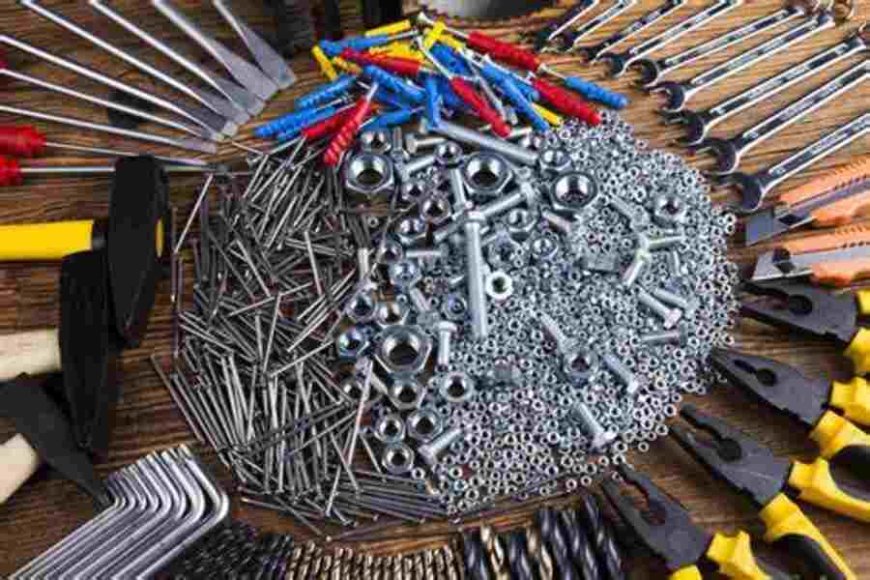Construction Fasteners: Significance, Varieties, and Applications
In the world of homebuilding and construction, the strength and stability of any structure depend as much on the fasteners used as on the materials themselves
In the world of homebuilding and construction, the strength and stability of any structure depend as much on the fasteners used as on the materials themselves. Construction fasteners are the unsung heroes of structural integrity, ensuring everything from wood framing to steel beams stays firmly in place. Understanding the types of fasteners available and their appropriate applications is essential for builders, contractors, and even informed homeowners.
Why Construction Fasteners Matter
Construction fasteners are the mechanical components that hold building materials together. They are essential for supporting structural integrity, withstanding environmental conditions, ensuring safety, and maintaining long-term strength. Using an inappropriate fastener may compromise the structure, whereas selecting the correct one can improve the project's longevity and robustness.
Fasteners are not one-size-fits-all. Each project demands specific types that correspond to material types, load requirements, environmental conditions, and code compliance. Using high-quality, application-appropriate fasteners is not just best practice—it’s essential to avoid costly repairs or dangerous outcomes.
Common Types of Construction Fasteners
1. Nails
Nails are one of the oldest and most commonly used fasteners. They are ideal for quick assembly and are especially effective in wood framing, sheathing, and roofing. Nail guns have made nail application faster and more uniform.
2. Screws
Screws offer stronger holding power than nails due to their threaded design. They are frequently used in drywall, cabinetry, decking, and general carpentry. Wood screws, sheet metal screws, and self-tapping screws serve different needs based on the material being joined.
3. Bolts and Nuts
Mur: For heavy-duty connections, especially involving steel or thick wood, bolts are a go-to choice. They are often used in structural steel frameworks, foundation anchoring, and heavy timber construction. Bolts provide a secure connection that can be easily adjusted or removed.
4. Anchors
Anchors are essential when fastening to masonry, concrete, or drywall. Expansion anchors, sleeve anchors, and chemical anchors each provide varying levels of strength and permanence, depending on the application.
5. Washers
Though often overlooked, washers are critical in distributing load and preventing damage to surfaces. They also help maintain the integrity of the fastened joint over time.
6. Rivets
Rivets offer a permanent solution for fastening metal and plastic. Common in structural steelwork and even aviation, rivets are valued for their strength and tamper-proof qualities.
Applications Across Home and Commercial Construction
Construction fasteners are used in every phase of a building’s lifecycle:
Framing: Nails and framing screws are staples for wood-frame construction, while bolts are key in steel framing.
Roofing: Roofing nails, screws, and specialized washers are designed to withstand weather extremes and secure materials like shingles and metal sheets.
Drywall Installation: Drywall screws provide clean and secure fastening to studs without damaging the panel.
Decking and Outdoor Projects: Weather-resistant screws and bolts ensure durability against corrosion and seasonal changes.
Concrete Anchoring: Expansion bolts and chemical anchors are used in securing structures to concrete foundations or walls.
Choosing the Right Fastener
When selecting fasteners, consider the following factors:
Material Compatibility: Ensure the fastener material doesn’t react adversely with the base material (e.g., stainless steel for outdoor use to avoid rust).
Load Requirements: Heavier loads require stronger, more secure fasteners like bolts or anchors.
Environmental Exposure: Galvanized or coated fasteners are better for moisture-prone areas.
Ease of Installation: Screws may be preferable to nails for ease of removal or adjustment.
Investing in reputable brands and consulting manufacturers' specifications ensures optimal performance and longevity.
Conclusion
Construction fasteners might be small, but their role in the integrity and success of building projects is massive. For anyone involved in construction—from DIY homeowners to professional contractors—understanding fastener types, uses, and quality indicators can lead to safer, more efficient, and longer-lasting results.
Make informed choices, and your structures will thank you with years of resilience and reliability.

































































































![Coaching and Discovery in Product. What High-Performing Teams Are Doing Differently [TPG Live Recap]](https://tpgblog.com/wp-content/uploads/2025/05/2025-05-08-thumbnail-action.png?#)








![Building A Digital PR Strategy: 10 Essential Steps for Beginners [With Examples]](https://buzzsumo.com/wp-content/uploads/2023/09/Building-A-Digital-PR-Strategy-10-Essential-Steps-for-Beginners-With-Examples-bblog-masthead.jpg)





















































